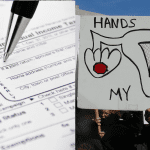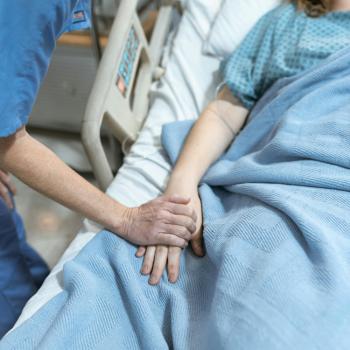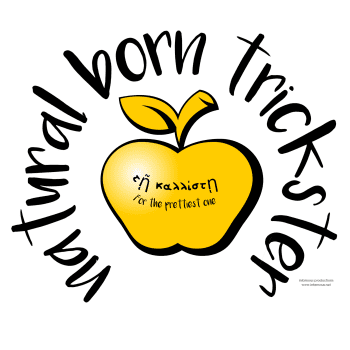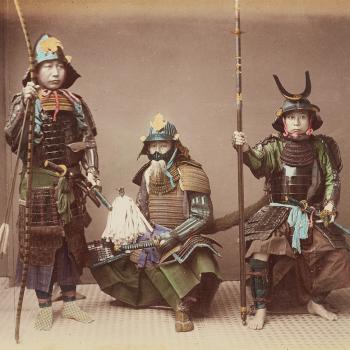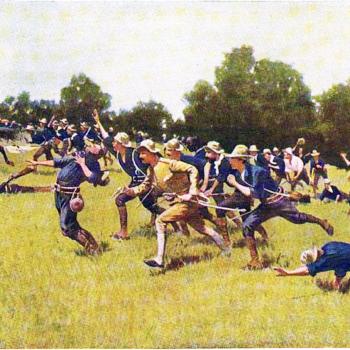So let’s be honest: a lot of Pagans smoke cannabis. Neo paganismto a large extent arose out of the 1960s counter-culture where cannabis use was common; even going back a few decades from there Gerald Gardner, generally cautious about drugs, wrote that cannabis (“hemp”) can be used in ritual if strict precautions are taken.
But for me, the date 4/20 will always be the day I got caught up in a life-and-death miracle.
Because of its cannabis associations (the exact origins of which seem to be lost in the mists of time but probably revolve around high school stoner jokes) the day has become a popular one for concerts — music and cannabis have been an American combo since jazz musicians were making Harry Anslinger freak out. April 20 2012 featured a “420” show by my friends Telesma, an “electro-acoustic psychedelic world dance music” band known to many Pagans from festival appearances or from their association with visionary artists Alex & Allyson Grey. I’ve been a fan since founders Jason Sage and Ian Hesford started jamming in Jason’s basement.
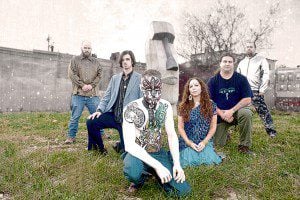
I made it to the show only by accident; I had given a talk at the Ecumenicon Interfaith Conference in Beltsville earlier and had expected to remain there through the evening, but a call from the day job about computer problems made me come home and log on to the web server for a while. After a few hours of beating computers into submission it was too late to head back to the conference so I decided some dancing was in order for the evening.
I got to the venue, Power Plant Live, just as the opening band was finishing their set. I wandered around and said hello to various folks I hadn’t seen in a while, then as Telesma took the stage I worked my way to the front to get some dancing space. I remember catching the eyes of a few band members — I was conspicuous in my famous purple top hat — and waving.
A few minutes into the set I saw Ian bump into one of his didges, knocking it over. I remember that because I’ve knocked my guitars over a few times and know how much it hurts a musician to have an instrument hit the floor! So when I looked at the stage again some seconds later and saw Ian lying on the floor, my first thought was that he had bent down to pick it up.
But he didn’t get back up.
Oh, I thought, he must be having some equipment problem, maybe he’s dealing with a loose mic cable. (The stage is a elevated by a couple of feet and Ian was behind his big barrel drums, so I couldn’t see what was going on well.) When Ian’s friend Travis leaped onto the stage, I at first assumed he was a sound tech jumping in to help with that hypothetical cable. Then I saw Travis shake Ian, and shout to photographer Phil Laubner, who was shooting the show from the side of the stage. I saw Phil run into the wings, and then I knew there was a problem. I ran over to meet Phil as he came out into the house, and heard him tell a security guy to call the paramedics.
It happened that I had just renewed my first aid and CPR training a few weeks before. I’d had training several times before, dating back to the high school summers I spent as a lifeguard, and in college I had a job at the university health center as a CPR Instructor Trainer — that is, I not only taught CPR classes but taught instructors how to teach CPR.
Now, despite all this, the most I’d ever had to do in “real life” up to this point was check that a passed-out friend was indeed still breathing. But I figured I had a better idea what to do than most bystanders, so I told the security guy I had first aid training and he let me by as I ran onto the stage and tried to figure out what the hell was going on.
I was expecting that Ian has just passed out — dehydration or overheating or something like that, that we’d get him some water and make soothing noises until the paramedics showed up. No big deal, so I wasn’t having any fear yet. In fact at this point I’m not sure if the rest of the band had noticed what was going on, I seem to recall that the music was still going as I got to the stage but I’m not going to swear to that.
But it quickly became apparent that something was wrong, that Ian wasn’t getting back up and was not responding. It couldn’t have been more than a minute between the time Ian went down until the music stopped and several people were gathered around him, trying to figure out what was wrong. Had he taken anything? (It was a 4/20 show, we had to ask.) No. Could it be some reaction to his body paint (a typical part of the show), overheating or an allergic reaction? Someone called for water and paper towels to get it off of him.
People were shouting suggestions. One of them — Sarah Saccoccio — said she was a nurse, but no one was listening.
An excellent rule for dealing with a crisis: find out who’s best qualified and put them in charge. I put on my Invisible Cloak of Authority +1, yelled that Sarah was a nurse, I was a former CPR instructor, and did anyone here have more qualifications? No? Then I declared Sarah to be in charge.
It turned out that Sarah is not just a nurse but a nurse at Baltimore’s world-class Shock Trauma Center — we had one of the most qualified people in Baltimore there. Part one of the miracle.
Ian was completely unresponsive and limp, his eyes open and staring. I titled his head back to open his airway and leaned over to “look, listen, and feel” that he was breathing, just like it says in the textbooks.
Now, it’s a funny thing about the human brain: give it information that doesn’t fit its model of the world and it will reject it. Ian is a young, healthy guy, and while he might have passed out for some reason, of course he was still breathing. Had to be. There, see his chest move? My brain almost convinced itself that I could see, hear, and feel him breathing. But I realized that no, it was just a hopeful expectation. He wasn’t.
It was at this point that two contradictory things happened in my brain. First, the acceptance that this was a serious situation and the fear that that brought on. When I taught CPR we actually taught that one of the signs of a heart attack is denial: no one wants to believe it’s really happening. I’d talked about that many times, but now I saw it at work in my own brain and had to get past it. But the second thing that happened helped me do that: routine. A set pattern of behavior, practiced enough times that you can do with even as the monkey mind screams and gibbers. “Yes, monkey, it’s scary but I have work to do so please get out of the way.”
So in a maneuver I’d performed hundred of time on mannequins but never on a person, I put my mouth to his and blew into his lungs, then felt at his neck for a pulse. I found a weak one, and continued giving breaths for a minute or so. Sarah checked for a pulse again, couldn’t find a good one, and we started CPR, she doing chest compressions and me doing breaths.
Even though Sarah’s chest compressions were more important — indeed, latest research suggests that compressions alone can be effective CPR — I was conscious of the mythopoetic nature of the moment, putting my own life’s breath into Ian’s body, a strange intimacy.
I don’t know how long it was before the EMTs arrived. Somewhere in there I yelled for someone to bring an AED, if there was one around, but the EMTs got there before anyone brought it. At one point it seemed Ian might have started breathing on his own, but apparently it was just what they call “agonal gasping”, so we went back to work.
The EMTs appeared and took Ian right out to the ambulance…and that’s when the long-delayed adrenaline dump hit me. Whoa. I was dazed, but so was everyone else there. We turned to each other for comfort.
I helped the band pack out and followed them to Mercy Hospital, where Ian had been taken. We learned later that despite extended CPR and several attempts at defibrillation Ian was without a pulse for over an hour and half — but the doctors and nurses didn’t give up. Part two of the miracle.
After such an extended time without a heartbeat, the prognosis would be lousy. We could expect Ian to suffer brain and organ damage. But part three of the miracle is that Mercy used a relatively new protocol, therapeutic hypothermia, in which the patient’s body temperature is lowered. In combination with dialysis, this protected Ian’s brain and vital organs.
Three weeks after literally dying on stage, after ninety minutes without a heartbeat, Ian walked out of the hospital with no ill effects other than memory loss for about a week before the show.
Indeed, a few months later when Telesma played their “Resurrection” show in honor of his recovery, all the band members and most of the audience were quite emotional about returning to the scene of his temporary death — all except Ian. He didn’t remember anything to be nervous about!
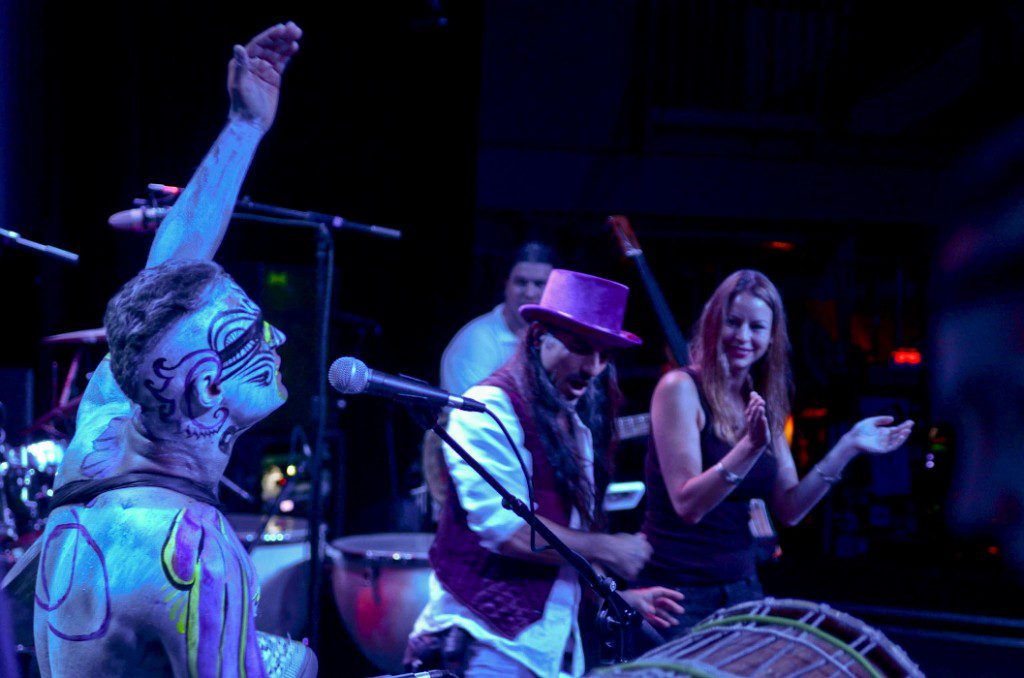
While I visited Ian several times in the hospital in the days following his collapse, I had to head to Japan for a karate tournament in Aichi. I was out of the country as he regained consciousness and was discharged.
But while I was in Japan I made a pilgrimage of sorts to Shinyakushi-ji, the “New Temple of the Medicine Buddha”, in Nara. (“New” being relative, the temple was founded in 747, as opposed to Nara’s other famous Medicine Buddha temple founded in 680.) I originally found this temple almost by accident on my first trip to Japan, shortly before beginning my shiatsu training, and have always taken that discovery as a sort of sign and blessing.
Not to sound like a stoned dorm room conversation, but the whole experience is a reminder to me of how connected our lives are, and how contingent they are, how anything can change in an instant. Ian’s work has touched thousands of people, their lives would be different — in ways subtle or large — without him. On that April night there were other people there to help, but I think it would have taken longer for that to get organized if I wasn’t there; so in an indirect but real way, my life has touched theirs.
But I was not going to be at that show, I ended up there only because a computer problem, a hard drive failure, made me come home early. The breakage of some bit of microelectronics was a triple-bank-shot that sent lives spinning in completely unpredictable yet deeply linked ways.
You can keep up with “The Zen Pagan” by subscribing via RSS or e-mail.
Detail TBD, but I’ll be at the Free Spirit Gathering this June, and the Starwood Festival this July.
If you do Facebook, you might choose to join a group on “Zen Paganism” I’ve set up there. And don’t forget to “like” Patheos Pagan and/or The Zen Pagan over there, too.


